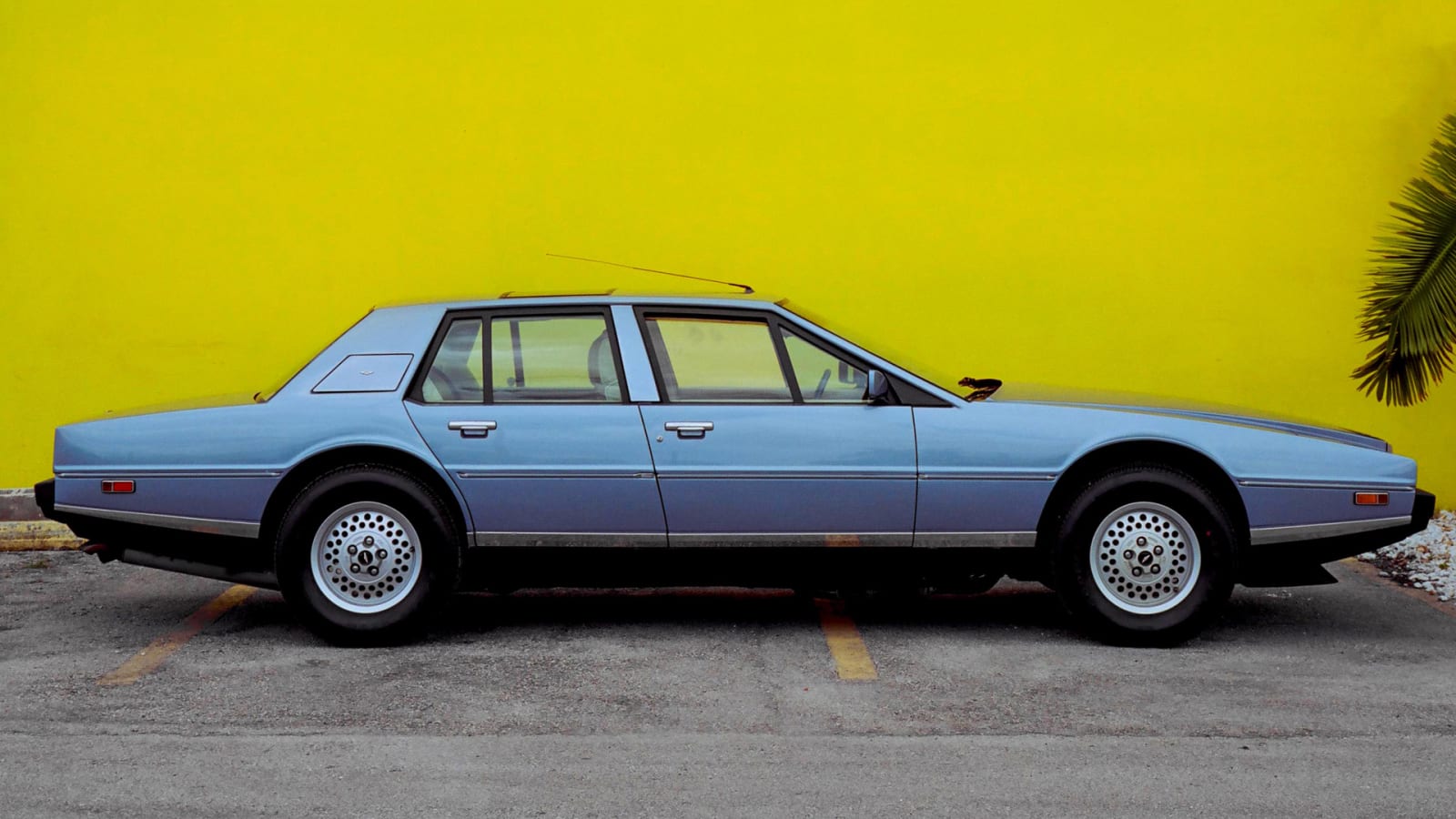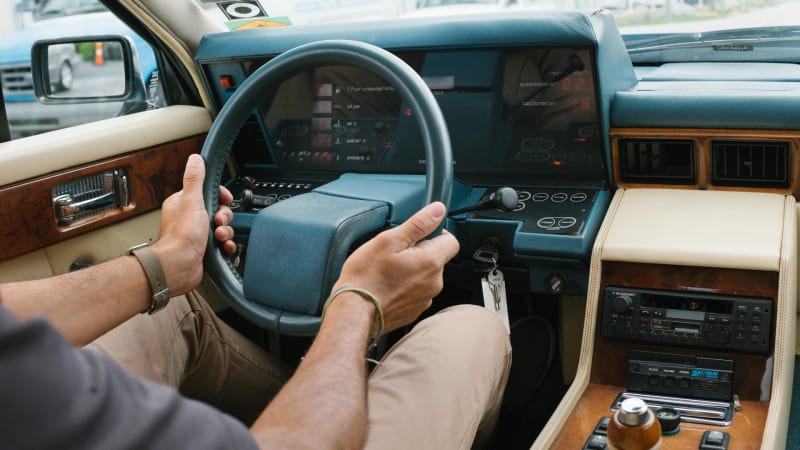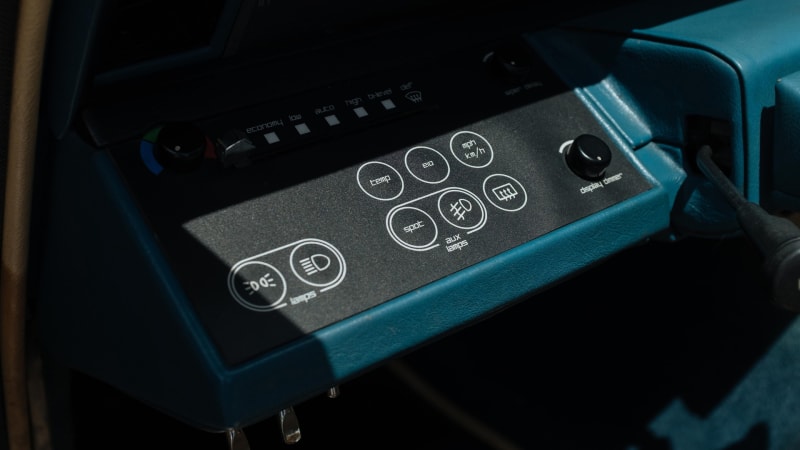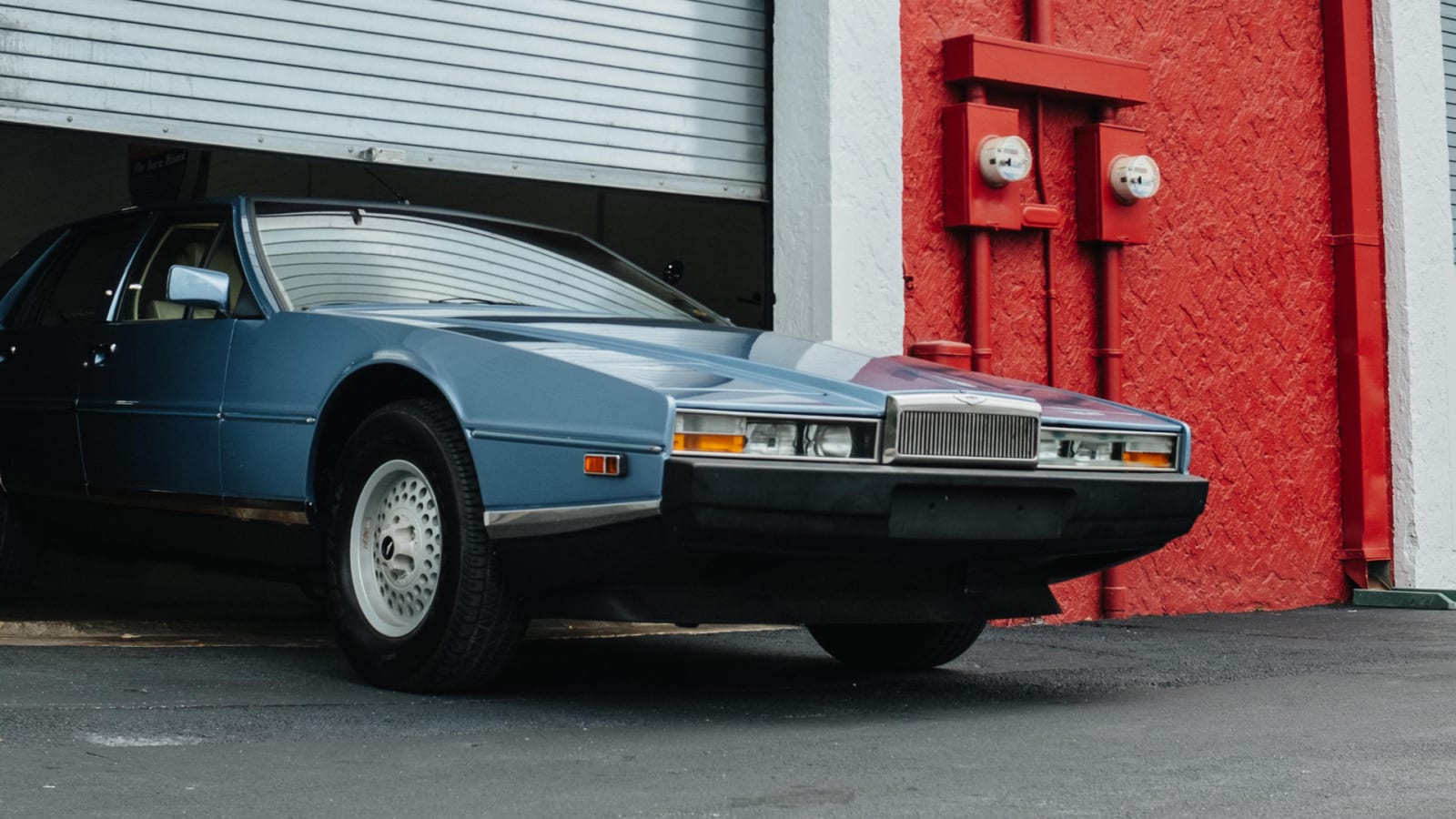The Barn Miami, a Florida specialty dealer in unique and exotic cars, has just listed this 9,000-mile, two-owner, 1985 Aston Martin Lagonda. Priced at $75,000, it seemingly represents not only a bargain (original list price was $150,000, or around $360,000 in today’s money) but an investment opportunity, and a chance to own one of the most iconic and controversial designs in all of automotive history.
When the Lagonda was launched in 1976, the storied British marque had fallen on hard times. Sales figures, build quality and employee morale were at a nadir, and the brand needed a big new idea. Aston turned to in-house designer William Towns, who had taken the brand out of the debonair, if increasingly anachronistic, DB2/4/5/6 styling paradigm with his creasy DBS of 1969.
Towns delivered an outrageous wedge of ultra-luxury sedan, with a miniscule rectangular grille, a plank-like prow, steeply angled pillars, and a truncated trunk. A 280-horsepower quad-cam, quad-carb 5.3-liter V8 put power to the rear wheels via a Chrysler three-speed automatic transmission, yielding single digit fuel economy. And the lunacy continued on the inside, with one of the industry’s first digital dashboards, the first application of touch-sensitive controls, and an odd sunroof above the rear passenger compartment.
“I think this was the way of the company getting itself back on track with a completely new and revolutionary model,” says Paul Spires, the director of Aston Martin Works, the brand’s in-house heritage and restoration shop, housed at the factory in Newport-Pagnell where the Lagonda was originally built. “In the second half of the 1970s, Rolls-Royce was enjoying success with its Silver Shadow and Bentley models, but there were very few other true high luxury sedans to choose from, and there was definitely a demand for something different and modern.”
Different and modern, indeed. The Lagonda was at the hemorrhaging edge of the era’s electronic capabilities, featuring systems that are still getting the bugs worked out of them 40 years later.
“When we look at many modern cars with touchscreen technology, you can perhaps see where the far-sighted and ambitions designers and engineers who created this car were looking,” says Spires. Though he adds, dryly, that his shop has since “converted some Lagondas to analog instrumentation for customers looking to maximize the long-term robustness of their cars.”
So terrorizing were the electrical gremlins that haunted this model, that Lagondas became almost untouchable. That’s precisely what happened to this example we’re featuring.
“The first owner purchased the car for his wife,” says Gaston Rossato, proprietor of The Barn Miami. “I was told that the wife drove it once and was so overwhelmed with all the buttons and functions that she refused to drive it ever again. After that, the butler used the car to go to and from the store.”
The second owner bought the car with around 7,500 miles on it, but he apparently used it very little as well.
“He was always scared,” Rossato says, “that if he looked at it the wrong way, it might retaliate.”
Now that modern technological capabilities have finally caught up with the Lagonda’s divinatory overreach, a new cohort has fallen in love with these cars’ outré styling and bonkers electronics.
“Lagonda values are rising — the average condition No. 2 [Excellent] value is now $78,728, which is up 51% in the past five years,” says Dave Kinney, publisher of the Hagerty Price Guide.
According to Kinney, this renewed interest is due in no small part to what he calls The Radwood Effect, and to what he describes as “a new generation of smart people, raised on computers and electronic devices, who take on the Lagonda’s electronics as a challenge, to update and repair using modern controls”
Kinney says that Lagondas now appear with increasing frequency at car shows, and are often one of the most talked-about and photographed cars on site.
“If the Wedge Look ever had a high-end poster boy,” he says, “the Towns-based design is clearly it.”
This particular example, with its documented provenance and service history, fully functioning electronics (save one bypassed exterior light switch,) all-original exterior and interior, charming pepper pot wheels, and extremely low certified mileage, certainly falls into the Excellent Condition category, and thus seems like a decent buy at the offered price. If you’re the lucky buyer, just be careful when you start it up.
“The pedals are offset to the left and feel awkward at first,” says Rossato. “I will admit, I started the car on one occasion with my foot on the gas, thinking it was the brake. Fortunately, it was in Park.”
Related Video:
[ad_2]
Source link





